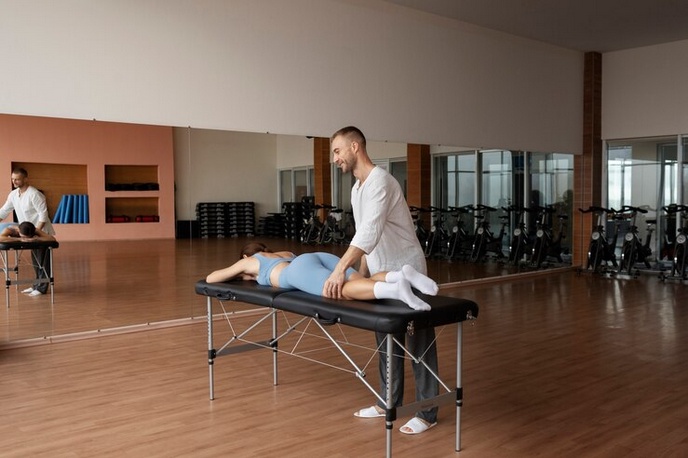Introduction
Traction therapy is a widely used technique in chiropractic care aimed at alleviating spinal compression, reducing pain, and improving overall spinal health. Chiropractic traction tables play a crucial role in delivering traction therapy effectively and safely. In this article, we delve into the principles, mechanisms, benefits, and considerations of traction therapy, focusing on the role of chiropractic traction tables in enhancing patient care and treatment outcomes.
Understanding Traction Therapy
Traction therapy, also known as spinal decompression therapy, involves the application of controlled traction to the spine, stretching it gently and relieving pressure on spinal discs, nerves, and surrounding tissues. This therapy aims to increase the space between vertebrae, allowing for the retraction of herniated or bulging disc material and promoting spinal alignment and healing.
Mechanisms of Chiropractic Traction Tables
Chiropractic traction tables are specially designed to provide mechanical traction to the spine in a controlled and precise manner. These tables feature adjustable sections, harnesses, and safety mechanisms to ensure patient comfort, safety, and treatment efficacy during traction therapy sessions.
The traction mechanism of chiropractic traction tables varies depending on the type of table. Some tables utilize motorized systems, which apply traction force through electric motors and adjustable settings, allowing for customized treatment protocols. Others may use manual traction mechanisms, requiring the chiropractor to apply traction force manually using mechanical handles or levers.
Benefits of Traction Therapy
Traction therapy offers a range of benefits for individuals suffering from spinal issues and related symptoms, including:
-
Pain Relief: By decompressing the spine and relieving pressure on spinal nerves, traction therapy can significantly reduce or eliminate chronic back pain, neck pain, and sciatica.
-
Improved Mobility: Stretching the spine during traction therapy helps to restore flexibility, range of motion, and overall spinal health, enabling individuals to move more freely and comfortably.
-
Non-Invasive Treatment: Traction therapy is non-surgical and non-invasive, making it a safe and effective alternative to more aggressive treatment options such as surgery or long-term medication use.
-
Customizable Treatment: Traction therapy protocols can be customized to suit individual patient needs and preferences, including adjustments to traction force, angle, and duration.
-
Holistic Approach: Traction therapy addresses the underlying cause of back pain rather than merely masking symptoms, promoting long-term healing and wellness.
Considerations for Chiropractic Traction Tables
When choosing chiropractic traction tables for your practice, consider factors such as:
- Type of Traction Mechanism: Decide whether you prefer motorized or manual traction mechanisms based on your treatment preferences and patient needs.
- Adjustability: Look for tables with adjustable sections, harnesses, and traction force settings to ensure flexibility and customization options during treatment.
- Patient Comfort and Safety: Prioritize tables with adequate cushioning, ergonomic design, and safety features to enhance patient comfort and reduce the risk of injury during traction therapy sessions.
- Durability and Reliability: Invest in high-quality tables that are durable, easy to maintain, and built to withstand the rigors of daily use in a chiropractic practice setting.
Conclusion
In conclusion, chiropractic traction tables play a vital role in delivering traction therapy effectively and safely, providing relief for individuals suffering from spinal issues and related symptoms. By stretching the spine and relieving pressure on spinal discs and nerves, traction therapy offers significant pain relief, improved mobility, and enhanced overall spinal health. When choosing chiropractic traction tables for your practice, consider factors such as traction mechanism, adjustability, patient comfort and safety, and durability to ensure optimal treatment outcomes and patient satisfaction. With the right chiropractic traction tables, you can elevate your practice and provide high-quality care to individuals seeking relief from spinal compression and related conditions.


No comments yet